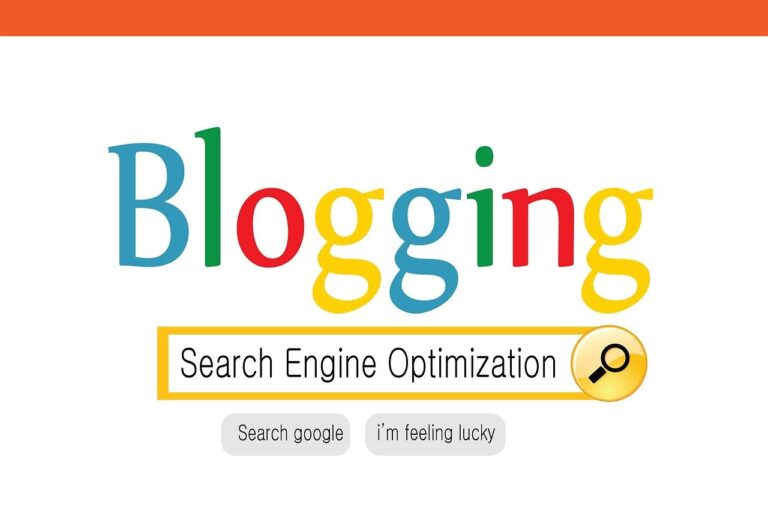Building a strong, supportive community is essential for holistic practitioners seeking to create lasting impact. By cultivating meaningful client relationships, you can enhance the effectiveness of your healing practices and foster a sense of belonging among those you serve.
Nurturing client relationships in holistic healing involves active listening, empathy, and creating a non-judgmental space for clients to share their concerns.

As a holistic practitioner, your ability to connect with clients on a deeper level sets the foundation for their healing journey. By implementing strategies that prioritize trust and open communication, you can build a loyal client base and create a thriving community around your practice. This approach not only benefits your clients but also contributes to the sustainable growth of your business.
Embracing a healing-centered approach to community development can transform your practice into a place of pride, power, and belonging for your clients. By focusing on building strong relationships and fostering a sense of community, you can create an environment where holistic healing flourishes and clients feel supported throughout their wellness journey.
Key Takeaways
- Prioritize active listening and empathy to build trust with clients
- Create a supportive community environment to enhance healing outcomes
- Implement strategies for sustainable growth through strong client relationships
The Importance Of Building A Supportive Community
Building a supportive community is crucial for holistic practitioners to create lasting impact and foster meaningful client relationships. A strong community provides numerous benefits, enhances client retention, and creates a sense of belonging among clients.
Benefits Of A Strong Community For Holistic Practices
A strong community offers significant advantages for holistic practices. It creates a network of support that enhances the overall client experience. You’ll find that clients who feel connected are more likely to engage actively in their healing journey.
This engagement leads to better outcomes and increased satisfaction with your services. A supportive community also serves as a platform for knowledge sharing. Clients can learn from each other’s experiences, complementing the guidance you provide.
Additionally, a strong community acts as a natural referral system. Satisfied clients are more likely to recommend your practice to others, helping you grow your client base organically.
Enhancing Client Retention Through Community Building
Community building plays a vital role in client retention for holistic practices. When you create a sense of belonging, clients are more likely to stay committed to their wellness journey with you.
Regular community events and activities can keep clients engaged between sessions. This ongoing connection reinforces the value of your services and keeps your practice top-of-mind.
Encouraging peer support within your community can also boost retention. Clients who form connections with others on similar paths are more motivated to continue their own progress.
Consider implementing a mentorship program where experienced clients can guide newcomers. This not only helps retain long-term clients but also integrates new ones more effectively.
Creating A Sense Of Belonging Among Clients
Fostering a sense of belonging is essential for building a supportive community in your holistic practice. When clients feel they belong, they’re more likely to fully engage with your services and the community at large.
Create opportunities for clients to connect through group sessions, workshops, or online forums. These shared experiences help build relationships and a collective identity around your practice.
Recognize and celebrate client achievements, both big and small. This acknowledgment reinforces their place in the community and motivates others.
Encourage clients to share their stories and insights. This not only empowers them but also helps others see themselves reflected in the community, strengthening their sense of belonging.
Strategies For Nurturing Client Relationships
Holistic practitioners can cultivate strong client relationships through personalized communication, trust-building, and consistent care. These strategies foster deeper connections and enhance the overall healing experience.
Personalized Communication Techniques
Tailor your communication style to each client’s preferences and needs. Use active listening to understand their concerns and goals. Maintain eye contact and provide undivided attention during sessions.
Employ empathy and create a non-judgmental space for clients to express themselves freely. Ask open-ended questions to encourage deeper sharing.
Utilize multiple communication channels based on client preferences:
- Email for detailed follow-ups
- Text messages for quick reminders
- Phone calls for personal check-ins
- Video calls for remote consultations
Customize your language to match each client’s level of understanding. Avoid jargon when explaining treatments or concepts.
Building Trust And Rapport With Clients
Establish clear boundaries and maintain professionalism in all interactions. Be transparent about your qualifications, treatment approaches, and expected outcomes.
Demonstrate reliability by being punctual and following through on commitments. Respect client confidentiality and privacy at all times.
Create a therapeutic environment that supports growth and healing. Ensure your practice space is clean, comfortable, and welcoming.
Show genuine interest in your clients’ progress. Celebrate their achievements and offer support during setbacks. Be patient and understanding as they navigate their healing journey.
Continuously educate yourself to provide the most up-to-date and effective treatments. Share relevant information with clients to empower them in their healing process.
Providing Consistent And Holistic Care
Develop comprehensive treatment plans that address all aspects of your clients’ well-being. Consider physical, emotional, mental, and spiritual factors in your approach.
Maintain detailed records of each client’s progress and adjust treatments as needed. Regularly review and update care plans to ensure they remain aligned with clients’ evolving needs.
Collaborate with other healthcare professionals when necessary to provide well-rounded care. Coordinate treatments and share relevant information with your clients’ consent.
Offer resources and tools for clients to continue their healing outside of sessions. This might include:
- Personalized exercise routines
- Meditation or mindfulness practices
- Nutritional guidance
- Recommended reading materials
Schedule regular check-ins to monitor progress and address any concerns promptly. Be proactive in reaching out to clients who may need additional support.
Developing Community-Building Programs
Community-building programs are essential for holistic practitioners to foster strong client relationships and create lasting impact. These programs require careful design, active participation, and effective measurement to ensure success.
Designing Programs That Align With Holistic Principles
When creating community-building programs, you must prioritize alignment with holistic principles. Start by identifying your core values and objectives. These could include promoting wellness, fostering connection, or encouraging personal growth.
Incorporate diverse activities that address multiple aspects of well-being. For example, you might offer:
- Group meditation sessions
- Nutrition workshops
- Collaborative art projects
- Nature walks or outdoor activities
Ensure your programs are inclusive and accessible to all clients. Consider offering both in-person and virtual options to accommodate different needs and preferences.
Tailor your programs to address specific community needs. Conduct surveys or focus groups to gather input from clients and understand their interests and challenges.
Encouraging Client Participation And Engagement
To maximize the impact of your programs, focus on boosting client participation and engagement. Create a welcoming atmosphere where clients feel comfortable sharing and connecting with others.
Implement a variety of communication channels to keep clients informed and involved:
- Regular email newsletters
- Social media updates
- Text message reminders
- Community bulletin boards
Offer incentives for participation, such as loyalty programs or special discounts for frequent attendees. This can help motivate clients to stay engaged long-term.
Encourage peer-to-peer interaction by incorporating small group activities or buddy systems into your programs. This fosters a sense of community and mutual support among clients.
Regularly seek feedback from participants and be open to adjusting your programs based on their suggestions. This demonstrates your commitment to meeting their needs and values their input.
Measuring The Success Of Community Programs
To ensure your community-building efforts are effective, you need to establish clear metrics for success. Begin by setting specific, measurable goals for each program.
These might include:
- Attendance rates
- Client satisfaction scores
- Improvements in specific health or wellness indicators
- Increased client retention rates
Use a combination of quantitative and qualitative data to assess program impact.
Conduct regular surveys to gather feedback on client experiences and perceived benefits.
Track long-term trends in client engagement and retention. Look for correlations between program participation and overall client satisfaction or health outcomes.
Consider implementing a holistic community development framework to guide your evaluation process.
This can help you assess the broader impact of your programs on individual and community well-being.
Use the insights gained from your measurements to continuously refine and improve your programs.
Share success stories and positive outcomes with your community to reinforce the value of participation.
Leveraging Social Media For Community Engagement

Social media platforms offer powerful tools for holistic practitioners to connect with clients, share valuable content, and build thriving online communities.
Effective use of these platforms can significantly enhance your practice’s reach and impact.
Choosing The Right Platforms For Your Practice
Selecting the most suitable social media platforms is crucial for your holistic practice.
Facebook’s versatility makes it ideal for creating engaging campaigns and fostering community. Instagram’s visual focus suits wellness-related content.
LinkedIn can help you establish professional credibility and network with other practitioners. Twitter allows for quick updates and interactions.
Choose platforms where your target audience is most active.
Consider your content type and practice goals when deciding.
Video-centric practices might thrive on YouTube or TikTok. Text-heavy educational content may perform better on Facebook or LinkedIn.
Creating Engaging And Valuable Content
Your social media content should provide value to your audience while showcasing your expertise.
Share health tips, wellness advice, and insights into holistic practices. Use a mix of formats: text posts, images, videos, and live sessions.
Craft content that aligns with each platform’s strengths.
For Instagram, use high-quality images and informative captions. On Facebook, longer posts and discussions work well. Create short, engaging videos for TikTok or Instagram Reels.
Consistency is key.
Develop a content calendar to maintain regular posting. Address common client concerns and questions in your posts.
Share success stories and testimonials to build trust.
Interacting With Clients Online
Active engagement with your online community is vital for building strong relationships.
Respond promptly to comments and messages. Encourage discussions by asking questions and seeking feedback.
Create a welcoming, informative space where followers feel valued and heard.
Host live Q&A sessions or virtual workshops to interact directly with your audience. Use polls and surveys to gather insights and involve your community in decision-making.
Show your personality and authenticity in interactions. Share behind-the-scenes glimpses of your practice.
Address concerns professionally and empathetically. Remember, each interaction is an opportunity to strengthen client relationships and showcase your expertise.
Organizing Events To Foster Connections

Holistic practitioners can strengthen client relationships and create lasting impact by hosting meaningful events.
Well-planned gatherings provide opportunities for education, connection, and community building.
Types Of Events That Promote Holistic Health
Consider hosting workshops focused on specific holistic practices like meditation, yoga, or nutrition. Wellness fairs allow you to showcase various healing modalities and introduce clients to new approaches.
Organize group nature walks or outdoor activities to connect clients with the environment. These outings promote physical activity and mindfulness.
Schedule regular support circles where clients can share experiences and offer mutual encouragement. This fosters a sense of belonging within your practice community.
Host guest speaker events featuring experts in complementary fields. This expands your clients’ knowledge and demonstrates your commitment to ongoing education.
Planning And Executing Successful Events
Start by clearly defining the event’s purpose and target audience.
Set specific goals for attendance, engagement, and outcomes.
Choose an appropriate venue that aligns with your event’s theme and accommodates your expected turnout. Consider factors like accessibility, parking, and amenities.
Develop a detailed timeline for pre-event tasks, day-of logistics, and post-event follow-up.
Assign responsibilities to team members or volunteers as needed.
Create engaging promotional materials and use multiple channels to reach your audience.
Leverage social media, email marketing, and word-of-mouth referrals.
Prepare handouts or takeaway materials that reinforce key messages and encourage continued engagement after the event.
Encouraging Client Participation And Feedback
Offer early bird discounts or bring-a-friend incentives to boost attendance. This can help expand your client base and strengthen existing relationships.
Create opportunities for attendees to interact during events through icebreakers, group activities, or discussion sessions. This fosters connections among participants.
Use interactive elements like live polls or Q&A sessions to keep attendees engaged. This also provides valuable real-time feedback.
Distribute post-event surveys to gather detailed insights on what worked well and areas for improvement. Act on this feedback to refine future events.
Encourage clients to share their experiences on social media using a unique event hashtag. This extends the event’s reach and creates a sense of community.
Practical Tips For Expanding Your Reach

Expanding your reach as a holistic practitioner involves strategic collaboration, leveraging client experiences, and sharing knowledge. These approaches can help you connect with more potential clients and establish yourself as an authority in your field.
Collaborating With Other Holistic Practitioners
Partnering with complementary practitioners can significantly broaden your network.
Seek out professionals whose services align with yours but don’t directly compete. For example, if you’re a nutritionist, consider collaborating with yoga instructors or massage therapists.
Organize joint workshops or events to cross-promote your services. This allows you to tap into each other’s client bases and offer more comprehensive care.
Create referral systems where you recommend clients to trusted colleagues when appropriate.
Consider forming a local holistic health alliance.
This group can share resources, organize community events, and provide mutual support. By working together, you’ll enhance your visibility and credibility within your community.
Utilizing Client Testimonials And Referrals
Your satisfied clients are powerful advocates for your practice.
Encourage them to share their experiences through testimonials. Ask permission to feature these on your website, social media, and marketing materials.
Create a simple referral program.
Offer incentives like discounted sessions or complimentary services for clients who bring in new business. This motivates clients to spread the word about your practice.
Use social proof effectively.
Share before-and-after stories or case studies that demonstrate your impact. Ensure these are authentic and respect client privacy.
Consider creating short video testimonials. These can be particularly engaging on social media platforms and your website. Always obtain written consent before sharing any client information.
Offering Workshops And Educational Sessions
Position yourself as an expert by hosting regular workshops and educational sessions.
These events can attract new clients and deepen relationships with existing ones.
Choose topics that address common concerns in your field. For example, a holistic nutritionist might offer a workshop on “Eating for Energy” or “Balancing Hormones Naturally.”
Utilize both in-person and online formats to reach a wider audience. Webinars can be particularly effective for expanding beyond your local area.
Consider partnering with local businesses or community centers to host your events. This can help you reach new audiences and build community connections.
Offer a mix of free and paid sessions.
Free introductory workshops can attract potential clients, while more in-depth paid sessions can generate additional income and establish your expertise.
In what ways can a lack of trust affect the stability of a holistic practice community?
Reduced client retention can occur. Without trust, clients may seek care elsewhere. This can impact the community’s growth.
Practitioner burnout may increase. A lack of trust can create a stressful work environment, leading to exhaustion.
Collaboration may suffer. Practitioners might hesitate to share knowledge or refer clients. This can limit the community’s effectiveness.






